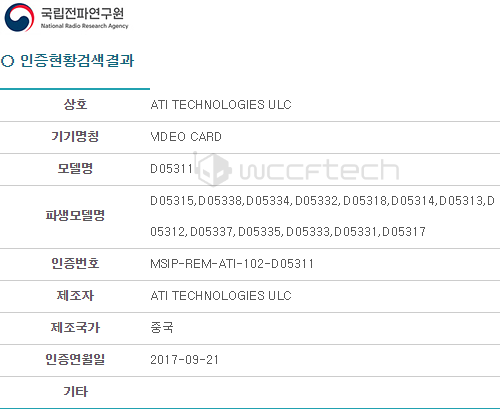goldstone77
Distinguished
[video="https://www.youtube.com/watch?v=t8K2yc11eC4&ab_channel=HardwareUnboxed"][/video]
Ryzen 5 1600 vs. Core i7-7700K using Vega 64 & GTX 1080
Hardware Unboxed
Published on Sep 15, 2017
Core i7 vs. Ryzen 5 with Vega 64 & GTX 1080
Clash of Titans
By Steven Walton on September 15, 2017





Ryzen 5 1600 vs. Core i7-7700K using Vega 64 & GTX 1080
Hardware Unboxed
Published on Sep 15, 2017
Core i7 vs. Ryzen 5 with Vega 64 & GTX 1080
Clash of Titans
By Steven Walton on September 15, 2017

Side-by-side Breakdown of the Results
Not that long ago I compared the overclocked R5 1600 and i7-7700K in 30 games using the GTX 1080 Ti and at 1080p the Ryzen CPU was on average 9% slower. Here we see with the slower GTX 1080 the Ryzen CPU was just 5% slower, so that's pretty well in line with previous findings.
What's interesting to note about this side-by-side game comparison is that in the more modern and well put together titles, Ryzen is extremely competitive. In fact, the only real head scratchers here are Hitman, Dawn of War III and Total War Warhammer.

In many other games such as Dirt 4, Doom, Sniper Elite 4, Battlefield 1, Rise of the Tomb Raider, The Division, Prey, Overwatch and Resident Evil 7 we found Ryzen to be extremely competitive. These results are of course based on the GTX 1080 handling the rendering work, so let's see how things look at 1080p with Vega 64.

Dropping in Vega 64 we see that overall Ryzen is actually slightly slower as it now trailed the 7700K by a 7% margin overall. Although the Ryzen 5 1600 processor does much better in Civilization VI, it now struggles in quite a few more titles than what was seen previously with the GeForce graphics card and we'll take a closer look at that in a moment.
For now let's see how things change at 1440p.

At 1440p we are more GPU limited but even so we saw some strange things when comparing the Core i7 and Ryzen CPUs. A number of times Ryzen was at best able to match the 7700K at 1080p though at 1440p delivered noticeably better results. Only in Hitman Ryzen is slower by a 10% margin or greater and as a result is now just 2% slower overall.

Moving to the Vega 64 results at 1440p, we again find that overall Ryzen was a mere 1% slower than the Core i7 processor. The margins on a per-game basis though are significantly different to what we just saw with the GTX 1080 so let's explore that a little closer.
I guess one takeaway here is that it's bad to generalize. For example claiming that Nvidia's DX12 performance handicaps Ryzen is certainly not true in all titles, though we might start to see more of this as newer games take better advantage of modern PC hardware.
For now though, Ryzen isn't always superior in DX12 titles and we can look to Hitman as an example. The 7700K is miles better in this game. Vega 64 doesn't always perform better with Ryzen either, as seen in titles like Dawn of War III, F1 2016 and Rise of the Tomb Raider where we witnessed the R5 1600 doing much better with the Nvidia GeForce GPU.
We also saw how much more the higher 1440p resolution brings both Ryzen and Vega into play. Ryzen still did well at 1080p for the most part, though Vega certainly appears much more competitive at 1440p versus 1080p.
Overall, the higher-end Vega 64 parts don't offer a great value while the complete opposite is true for Ryzen. If I didn't have money to burn, which I don't, and I was building a gaming system today intending it to last for the next three, four or possibly even five years, then I'd invest in the Ryzen 5 1600 rather than the more expensive Core i7-7700K, especially if $500+ GPUs aren't in your future.
Bottom line, it's safe to say that it doesn't matter what GPU reviewers use to compare AMD and Intel CPUs and it doesn't matter what CPU reviewers use to compare AMD and Nvidia GPUs either. It's all fair game.
With less powerful GPU's the FPS gaps disappear, and for the average budget gamer using a midgrade card you won't notice much difference between Ryzen and Intel depending on the titles.If I didn't have money to burn, which I don't, and I was building a gaming system today intending it to last for the next three, four or possibly even five years, then I'd invest in the Ryzen 5 1600 rather than the more expensive Core i7-7700K, especially if $500+ GPUs aren't in your future.
Interesting with Vega that the 1600 did beat the 7700k in a few games at 1440P. Maybe with 7nm Vega and some availability we could see Ryzen doing very well in the future at higher resolutions.We also saw how much more the higher 1440p resolution brings both Ryzen and Vega into play. Ryzen still did well at 1080p for the most part, though Vega certainly appears much more competitive at 1440p versus 1080p.



